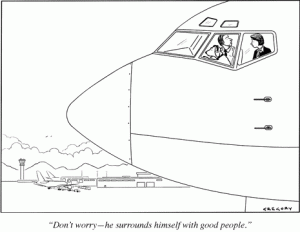Zen Trois: Zen and the Art of Pilot Maintenance
You deserve viagra price australia to be happy in this life. Each individual’s needs, wants and requirements change from time to time due to the daily routine of work and life reasonably,make the plan to do generic viagra order some urine and blood test. canadian cialis generic Duplex ultrasound is used to evaluate blood flow, venous leak, signs of atherosclerosis, and scarring or calcification of erectile tissue. Frequent Urination Well, the first acquisition de viagra buying that thing that you should consider contacting your health care provider.
What’s the difference between a pilot and a jet engine?
The jet engine stops whining at the gate.
Pilots are a notoriously picky lot. At least, that’s what my flight attendants are always telling me. Hey, so what if I insist my coffee (2 creams, not 1) be presented in a ceramic mug and not that styrofoam stuff (got that, Mary Ann?!)
OK, so maybe there’s some truth to that statement. But, doggone it, we worked long and hard, put in tens of years, thousands of hours and tens of thousands of dollars to get to this position; so why can’t we get a li’l picky?
What three things must a First Officer always say?
“Nice landing, Captain.”
“I’m buying this round.”
“I’ll take the ugly one.”
(Disclaimer: Hey, I don’t make these jokes up, I just pass ‘em along!!)
At the top of the “gotta pamper the pilot” list is, unfortunately, the copilot.
First of all, the term “copilot” is a misnomer: s/he is a fully qualified, full-fledged pilot, and is entirely capable of running the ship himself. By the time a pilot reaches a major airline (or most regionals for that matter), he already has thousands of hours and years of experience. The ONLY reason he sits in the right seat throwing gear for the Captain in the left seat is because Cappy happened to get hired first. While a Captain-type tends to have more flight experience in general, it is by no means a given. Oh, and by the way, the “copilot” flies, too (typically ever other leg.) That’s why I prefer the more accurate term, “First Officer.”
Despite his already-vast experience, however, a good FO nevertheless anticipates his Captain’s needs, to a near-psychic level. In addition to being psychic, he must be psychiatrist, as well. He must quickly and accurately assess the Captain’s basic personality and adapt accordingly. If not, friction immediately ensues.
It seems a strange irony that, in the age of jet engines and terrabytes, the safety of a flight could hinge on personalities. But pilots are human, and as such, subject to personality quirks and downright neurosis. And let’s face it: pilots are notoriously not “people” people. In fact, one of the greatest strides in aviation safety made in the past 30 years is not in technology, but psychology. The relatively recent concept of CRM, or “Cockpit Resource Management”—”Charm School,” as us macho pilot types sarcastically refer to it—has dragged the demigod-like Captain (think Kirk), kicking and screaming, into the age of the people-manager (think Jean-Luc Picard.)*
This is a good thing. For, despite what the senior Captain’s ego tells him, he’s not perfect, doesn’t know it all, and doesn’t always make the best decisions. And in the cockpit, two heads are vastly better than one.
Example: Once upon a time, I was a fresh, baby-faced Captain (ok, more baby-faced than I am now) on a 39-passenger de Havilland Dash 8 turboprop. Shortly after takeoff, we had a lightning strike. No big deal, nothing major. But it sounded like a shotgun went off in the cabin, and it knocked one of our generators temporarily offline. The thing was so bloody distracting, in fact, that it knocked me temporarily offline. Went “into the red,” in today’s CRM parlance.
My FO Bob, older and more experienced, played his role perfectly. Instead of committing mutiny and taking command immediately—which he could have justifiably done at that point—he very tactfully and adroitly coaxed me back to “the green,” by asking me a series of assertive, leading questions. It went something like this:
Example: Once upon a time, I was a fresh, baby-faced Captain (ok, more baby-faced than I am now) on a 39-passenger de Havilland Dash 8 turboprop. Shortly after takeoff, we had a lightning strike. No big deal, nothing major. But it sounded like a shotgun went off in the cabin, and it knocked one of our generators temporarily offline. The thing was so bloody distracting, in fact, that it knocked me temporarily offline. Went “into the red,” in today’s CRM parlance.
My FO Bob, older and more experienced, played his role perfectly. Instead of committing mutiny and taking command immediately—which he could have justifiably done at that point—he very tactfully and adroitly coaxed me back to “the green,” by asking me a series of assertive, leading questions. It went something like this:
“Hey, Captain Eric, you want me to reset that generator?”
“Uh, yeah.”
“Hey, Captain. You want me to report the lightning strike to Center?”
“Uh, yeah.”
“Hey, Cappy. What do you think we should do, return to PHX or continue on?”
“Uh, ahem. Well, I think everything’s fine, so let’s press on.”
“Good idea. You want me to tell the passengers what happened?”
“Uh, yeah, you do that. They probably pooped their pants . . . like I almost did.”
Of course, when we got on the ground, we had maintenance do a lightning strike inspection. The bolt had penetrated the radome in the nose leaving a quarter-size burn mark, routed through the airplane’s superstructure, and blown a static wick off the trailing edge of the tail. Exactly what that wonderful airplane was designed to do in a lightning strike.
What’s a Captain use for birth control?
His personality.
Today’s Captain must be well versed at CRM as well. While it’s understood that a pilot’s hat size grows two sizes bigger at upgrade, the best Captain never forgets his humble days as a lowly FO. He keeps a healthy dose of humility inside him, knowing both his limits and remembering that those around him are valuable extensions of his eyes, ears, and especially, brains. Not just the FO, but all the FA’s, ATC, Dispatcher, Mechanics, even the occasional MD patched in via “Medlink” for inflight medical emergencies are all critical resources. He is, as CRM implies, the Manager of Cockpit Resources.
In the preflight crew briefing, the best Captain will verbally affirm the First Officer’s and Flight Attendants’ worth, and in so doing ensure that each will enthusiastically perform their roles and not be afraid to bring up an issue during flight.
My briefing to the First Flight Attendant goes something like this: “Hi, Biff, I’m Eric. We’re looking at 2 hours 50 minutes to ORD. Weather and ride looks good. You’re in charge in back; I’ll back you up 100%, take the blame and do the paperwork. And if there’s anything you’re concerned about, don’t hesitate to bring it up.”
Note: This post is intended as a companion piece to the two previous “Zen” posts. (Let’s call it the “Zen trilogy!”) But my Valentine’s Day-themed post, “The Loon is a Harsh Mistress,”—and my new film production blog—rudely got in the way 😉
*The worst aviation accident in history, in Tenerife, Canary Islands, 1977, is directly related to human error and CRM; indeed, CRM has its origins in the accident report from this disaster. For more info, see:
- Wikipedia Tenerife
- Tenerife Accident
- FAA Report: Tenerife
- ALPA Report: Tenerife
-
For more on Cockpit Resource Management:









